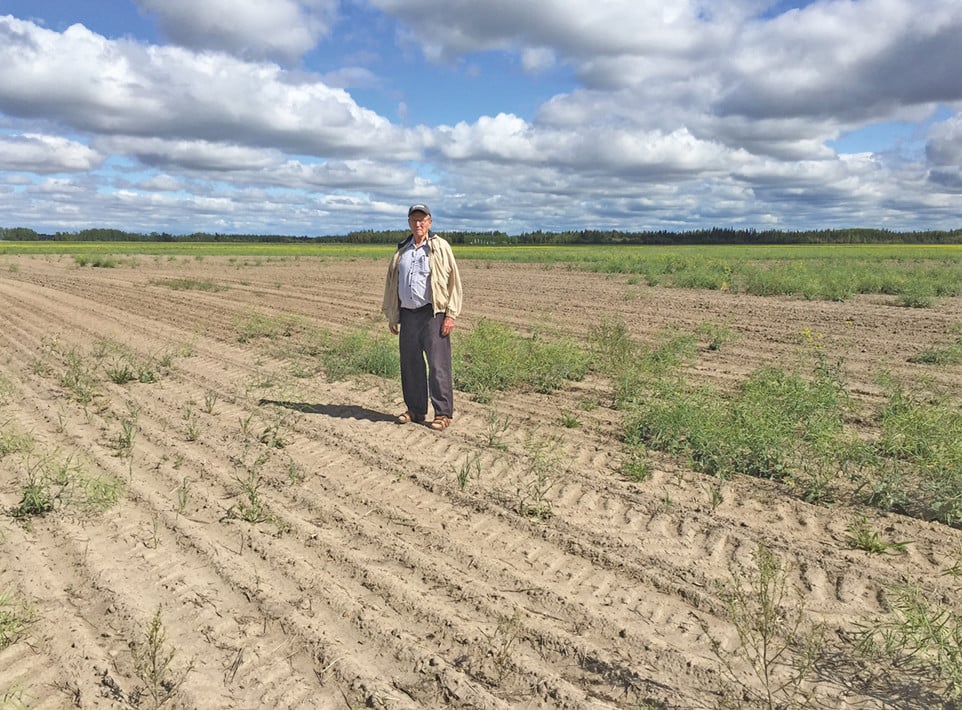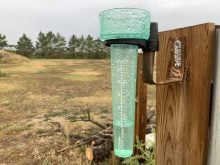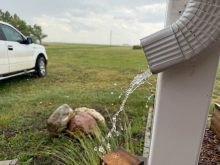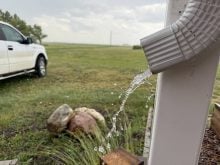Drought hits everyone hard, but Mackenzie County’s 150 cattle producers have been squeezed harder and earlier than most — and the fallout may be felt for years.
Cattleman Eric Jorgensen remembers looking at an agro-climatic map in mid-June that showed the province’s largest county, which at 80,000 square kilometres is larger than New Brunswick, had essentially received zero precipitation since the snow melted.
“That’s when we really started to feel it — even that week in June, there were cows being shipped south from our area,” said Jorgensen, who ranches near Fort Vermilion and is also a county councillor.
Read Also

Grazing ‘sweet spot’ boosts pasture performance
Timing-focused approach to pasture management touted to boost forage growth, livestock gains while also cutting farmer labour and inputs
A month later — when he and his fellow councillors would be one of the first councils to declare a state of agricultural disaster — the exodus of cattle was in full swing.
“By that point, we’d already been seeing a steady stream of breeding cattle going south. Those cattle are so hard to replace,” said Jorgensen.
Many of them clambered into Bill Fehr’s trailer.
“Normally in the month of July, I would haul two or three loads of cattle to the auction,” said Fehr, an independent trucker based in La Crete.
“This July, it was 14 loads. From the middle of June to the middle of July, there were over 200 cow-calf pairs and 40 or so replacement heifers.”
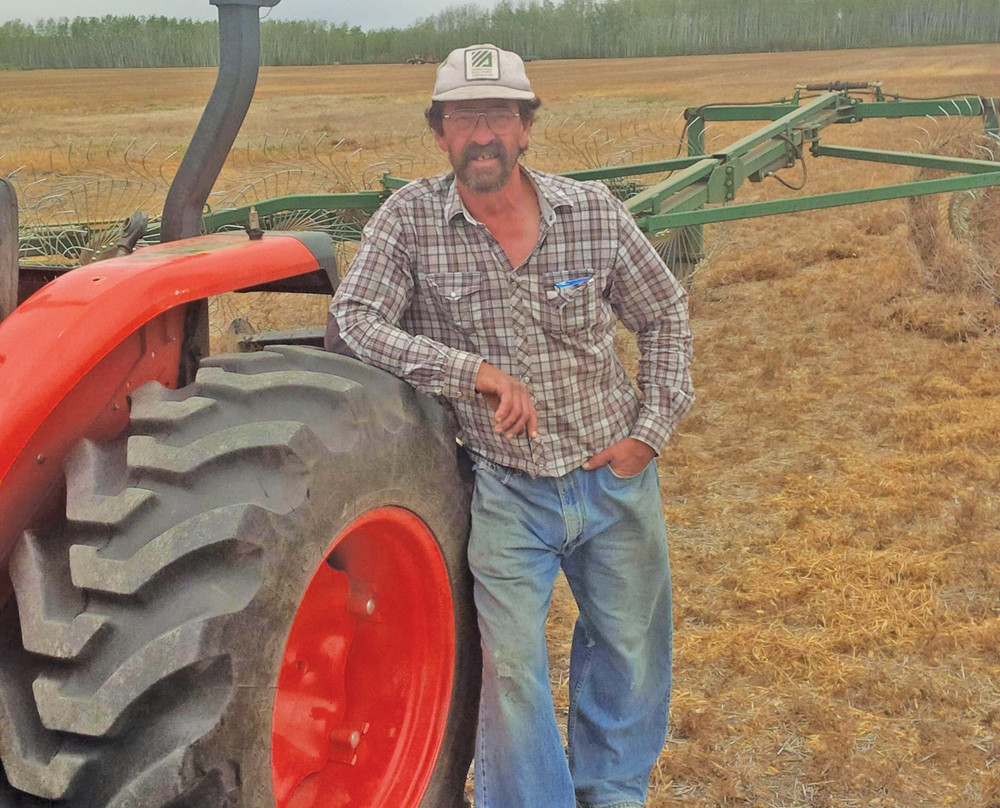
Those are significant numbers because many producers have herds in the 50- to 80-cow range. Cattle are often a source of second income but with oilfield work in the doldrums, now is not a time when producers can subsidize their farm.
And when the entire county dries up, its remote location — it’s 550 kilometres from Fort Vermilion just to Grande Prairie — quickly becomes an issue. Some producers from Manitoba sent free hay to Fort Vermilion, but the shipping costs were still tough to bear.
“Even shipping hay from Grande Prairie costs about $40 a bale, and Grande Prairie was selling hay for about $150 a bale. Farmers were shaking their heads,” said Jorgensen.
Grim math
Multiply that by eight bales needed to get a cow through winter and the numbers just don’t work.
“Because of the high cost of feed, there’s no way people can afford it,” said Bill Neufeld, who has been reeve for 30 years. “One farmer could sell his herd for $90,000 or buy $90,000 worth of feed. Which option could anybody take?”
The hope is that the rains will return and producers will buy cattle next year. But even if they do, it will take years to rebuild herds, said Neufeld.
Jorgensen hasn’t reduced his 100-cow herd so far. He uses Crown grazing leases, which have been beneficial because the bush hasn’t been hit as hard as the grass.
He’s also discussed these issues with many fellow producers. He rarely gets calls from constituents, but he’s had more than 20 calls from worried cattle producers this summer.
“In the middle of June, people were seeing that they couldn’t feed their cows and they were shipping and they were worried about taxes and preserving their efforts of the last 20 years,” he said. “The anxiety level was awfully high there.”
Fehr had a lot of those conversations, too.
“I talked to one fellow who has 200 cows — he said the way it was looking now, he would have feed for about 50 for the winter,” Fehr said in a mid-August interview. “We have guys here who would normally background their own calves and feed them up to 900 pounds.”
Since June, there have been pockets of scattered showers, but only about an inch of rainfall. So producers are adapting as best they can, said Jorgensen.
“People are scrambling and trying to put together the winter feed with what they have left,” he said. “The anxiety level does drop when you make a decision, or make a plan. And I think the people have been with this long enough now that most of them are starting to make plans.
“I don’t see the deer-in-headlights look that we were seeing in June and July. They’ve got some plans and options now.”
But often the best plan is to sell.
Jorgensen pointed to a local community pasture that is normally home to about 800 cattle until October. Not this year.
“Those calves are coming out of the pasture next week and being sold right away because they don’t have the feed,” he said. “There will be a fair number of cattle leaving the county.”
Finding solutions
How many, all comes down to finding as much feed as possible.
Cattle producers are working out deals with their grain-farming neighbours to get access to fields that aren’t worth combining. County officials are working with Alberta Environment and Parks on issuing hay permits on Crown land, which allows producers the ability to remove slough grass for their cattle. Roadsides are being baled. Producers have also been able to access head tax permits, which allow them to pasture cattle on Crown land and grazing leases have been opened, (although producers must own the cattle to qualify for the latter).
But a more comprehensive plan is needed, said Jorgensen.
Although he’s not in favour of government bailouts, something needs to be done if Mother Nature doesn’t co-operate and the dry conditions persist. One of his neighbours shipped cattle to his father-in-law’s place in Vermilion, rather than sending them to market.
“Maybe that is something that could happen across the province,” he said. “We’ll see a lot more custom feeding done. It is so much cheaper to ship a liner load of cows than it is to ship eight liner loads of hay.”
In the meanwhile, farmers are working together to come up with creative ways to address the lack of feed.
Jorgensen’s neighbour usually spreads his pea straw on his fields, but “he came over and asked if I wanted to follow his combine and see what I could do.”
“That’s the kind of thing that has to happen (and) that the government can’t put in place,” he said. “People have to come together to meetings and share ideas.”
And while Mackenzie County cattle producers have it bad, “I don’t want to cry wolf,” Jorgensen added.
“I know that there are other areas that are facing the same thing — complete herd dispersals and lack of feed. They’re not through it either.”


